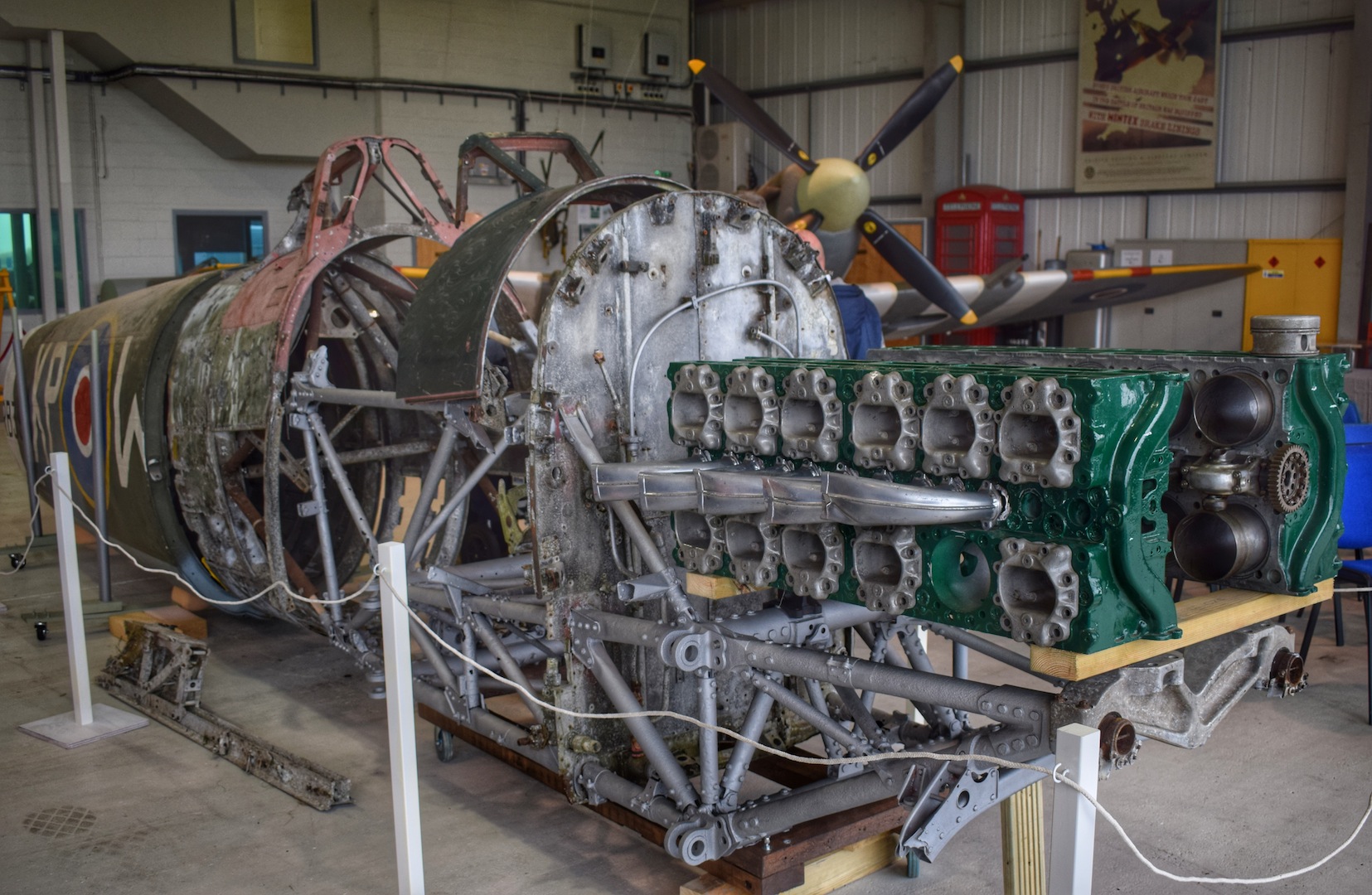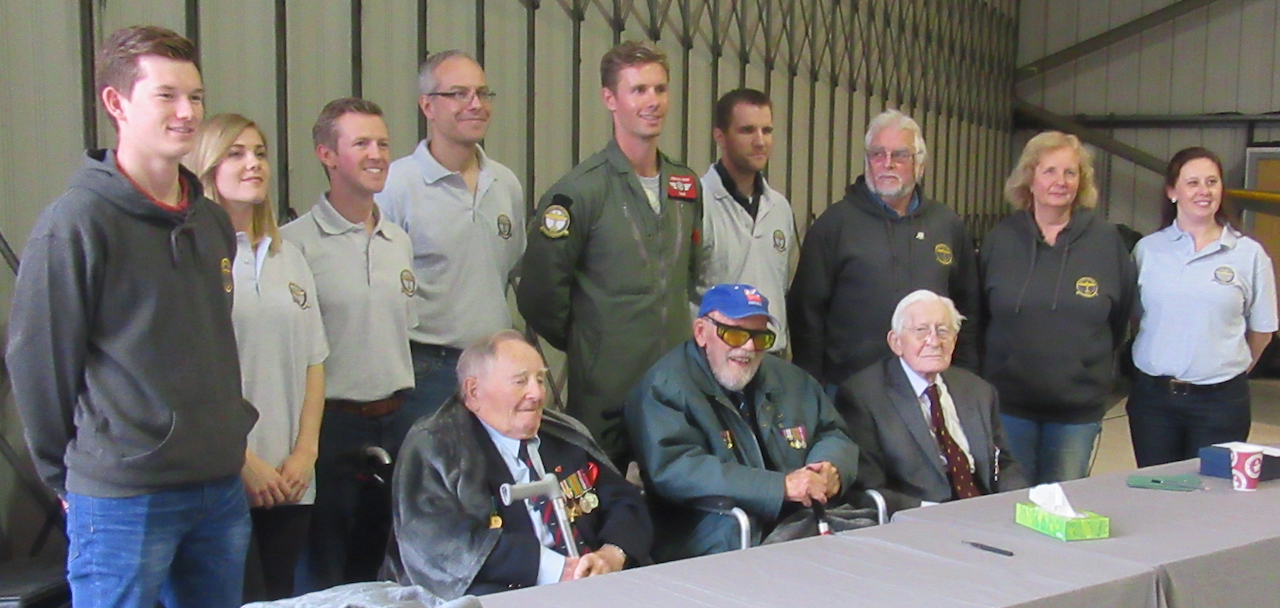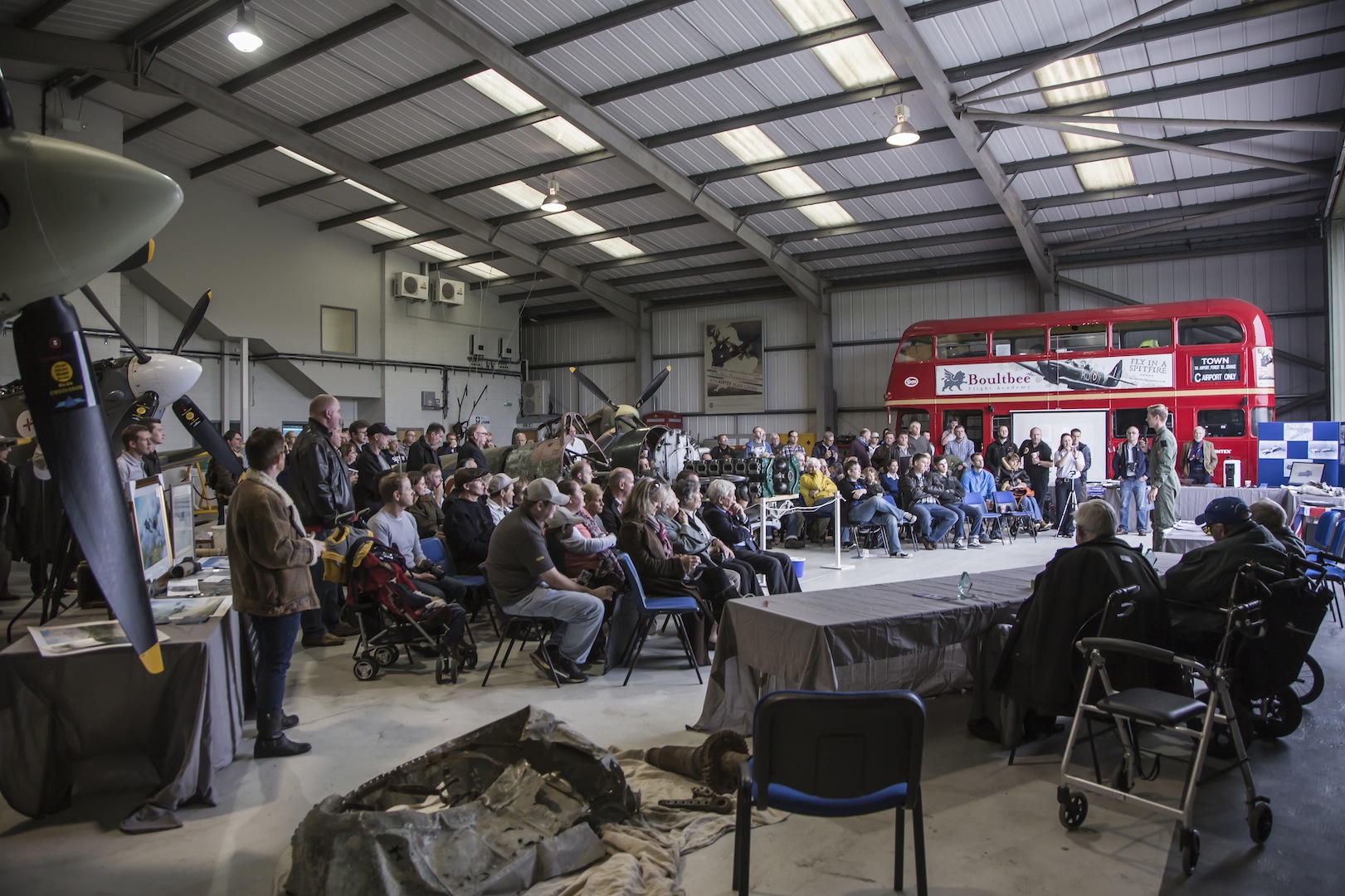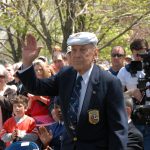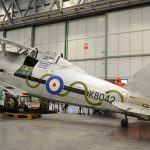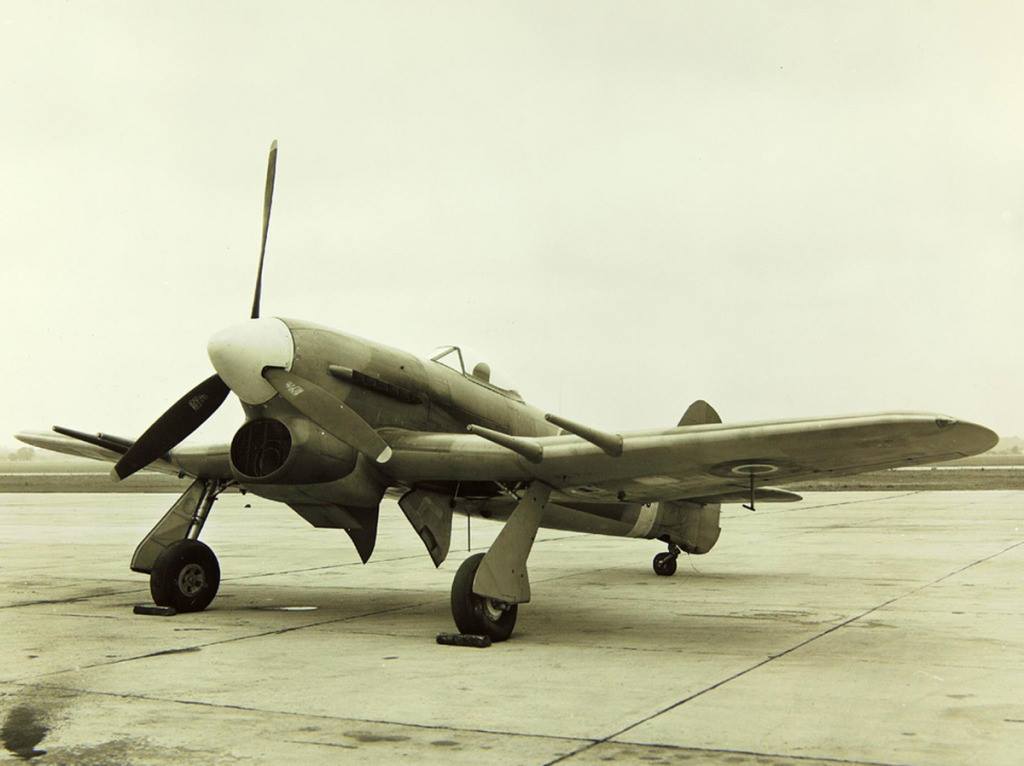
On October, 29 2016 the Hawker Typhoon Preservation Group publicly launched the exciting project to restore the Hawker Typhoon Mk.1b RB396. The goal is to have the aircraft to airworthy condition in time for the D-Day 80th anniversary in 2024. The event featured three guests of honor, wartime Typhoon pilots Flt Lt David Ince DFC, Flt Lt Derek Lovell and Flt Lt George Wood and was held before an audience of over 150 media representatives and supporters at the Boultbee Flight Academy Hangar, Goodwood Aerodrome.
The Hawker Typhoon Preservation Group aims to restore a Napier Sabre powered Hawker Typhoon Mk.1b aircraft to flying condition using the substantial remains of serial number RB396, and demonstrate the aircraft to the public as a living memorial to the Typhoon crews who flew in support of Allied air operations during the invasion of occupied Europe. RB396 was one of 3,317 Typhoons manufactured during the early 1940s. The aircraft saw combat with No. 121 Wing of the Second Tactical Air Force’s No. 83 Group, and survived a forced landing on 1 April 1945. This airframe will form the basis for a major restoration project, which will be carried out by professional organizations and individuals across the UK. Once complete, this will be the world’s only airworthy example of the Typhoon.The Hawker Typhoon Preservation Group also plans to establish a heritage center and memorial to help educate the public in the importance of the Typhoon’s wartime role, telling the story of the aircraft and its crews for the benefit of British heritage, remembrance and historical knowledge. Plans are now afoot to find a suitable base for the aircraft and heritage centre to enable the public to see the project unfold at close quarters.
Project founder and trustee Dave Robinson has been working on returning a Typhoon to flight since 1999, and the October’s launch was the culmination of his steadfast dedication and perseverance to the cause. His fellow founding trustees Jonathan Edwards and Sam Worthington-Leese joined the project in more recent years and the team has taken the significant step of registering the Hawker Typhoon Preservation Group as a charity (no. 1167143) to support future restoration work. All three founding trustees are running the project on a voluntary basis.
The restoration of Typhoon RB396 is a particularly personal affair for aviator Sam Worthington-Leese, whose grandfather, Pilot Officer R.G. Worthington, flew Typhoons in combat during World War Two. P/O Worthington flew his last operational mission from RAF Westhampnett (now Goodwood Aerodrome) in West Sussex and was downed by enemy fire over Europe. He was later captured and imprisoned at Stalag Luft III PoW camp until the war’s end.Surviving parts of P/O Worthington’s Typhoon will be included within the restoration, and it is Sam’s ambition to fly the restored Typhoon from Goodwood on the anniversary of his grandfather’s last flight, bringing a very personal story of cross-generational remembrance full circle in the most fitting and poignant manner imaginable.
The project is estimated to cost in the region of £4-6 million and will be funded by public support, donations and sponsorship. Project membership and donation options are now available online, and a range of merchandise is available online and at future British airshows. The Preservation Group hopes to have the Typhoon flying by 2024, to coincide with the D-Day 80th anniversary commemorations.Dave Robinson, project founder and trustee, said: “There can be no doubt that the Typhoon was instrumental in accelerating the Allied victory in Europe. We can only speculate on how many thousands of lives were saved by the bravery of Typhoon pilots and the dedication of their ground crews. Yet ,the Typhoon’s role in the vital latter stages of World War Two is largely overlooked by the history books and the aircraft has slipped from the public conscience over the last 70 years. The aim of the project is to share the rich history of this aircraft with a wider audience and it was inspiring to see so many people, both young and old, supporting the project at our launch event. Thank you to all of those who attended and those who worked so hard to organize this special day.”
For more information and to keep up to date with the project, visit the official website at www.hawkertyphoon.com. The Hawker Typhoon Preservation Group also has a strong social media presence – visit them at Facebook , Twitter and YouTube.








